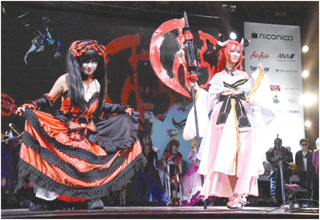
[ Nang Sanie ]
Anime refers to a style of Japanese animation, typically aimed at adults and children.
More often than not, animated entertainment is deemed “for children” and brushed off as “cartoons for kids” and at times, looked down upon.
Anime and manga (Japanese style comics) are no strangers to these judgements, but many do not realize that there exists anime and manga like Elfen Lied, Blood C and Berserk which are rated 18+ for their gory content and nudity.
The above are just examples of different genres; there are many others to choose from, including those appropriate for children.
Anime is regarded as entertainment, but it has huge impact on educational, moral, cultural and emotional learning of individuals who take it seriously.
Gurren Lagann, a mecha (robots and machines) based anime series seems to be pretty simple and straight forward on the surface but on a deeper analysis, one realizes that it is brimming with layers of meaning and symbolism.
The evolution of anime brought about a concept called ‘cosplay’.
Cosplay is contraction of ‘costume play’. It refers to the representation of a specific character with costumes and acting.
The term was coined by Nobuyuki Takahashi in 1984.
Juno Pinggam, who goes by her alias @hotaru_juno on Instagram is a cosplayer from Itanagar who has been cosplaying since 2012. In 2017, Juno and her partner, Chichi Gichik were selected as India’s representative for the World Cosplay Summit, which is held every year at Nagoya, Japan.
“I was a fan of Japanese culture ever since I can remember”, she said, talking about what sparked her interest in anime. She started with mainstream anime in India like Pokémon, Beyblade and Dragon Ball Z.
Her love also extends to Marvel and DC comics, and the Indian comic Nagraj.
She wanted to be like the characters she watched and read about, and with a little luck, she stumbled upon cosplay on the internet. She says cosplay helped bloom her personality; make friends through mutual interest; and gave opportunities to learn.
Juno says that because cosplay is new to India, people still don’t accept it and think that “bringing foreign culture to India is not good”. On the contrary, her family accept and support her.
Cosplay is often misunderstood and not considered a serious profession. While in Japan, cosplay is an integral part of the culture as well as economy.
Talking about the struggles of being a cosplayer in India, Juno professed that the resources are the hardest part.
“I make props out of anything I can find”, said Juno.
Sometimes the budget is short or time is not enough.
People tend to compare her to others and say that her cosplays aren’t good enough, but the good outweighs the bad.
Cosplaying with store-bought costumes is easy, but cosplayers make their own props, including complex props, which can take months to create.
It is not easy and often, the invested time, money and hard work done by cosplayers is overlooked.
The criticisms she receives inspire her to do better. All cosplayers are an inspiration to her because it takes courage to cosplay. When others cosplay characters she likes, she gets motivated to cosplay, too.
She hopes for growth of Japanese pop culture in India and more opportunities for exploration of fun and creativity.
Although the concept is new, it is fast growing and gaining more popularity. Multiple events are conducted yearly, all around India, to celebrate anime and cosplay.




